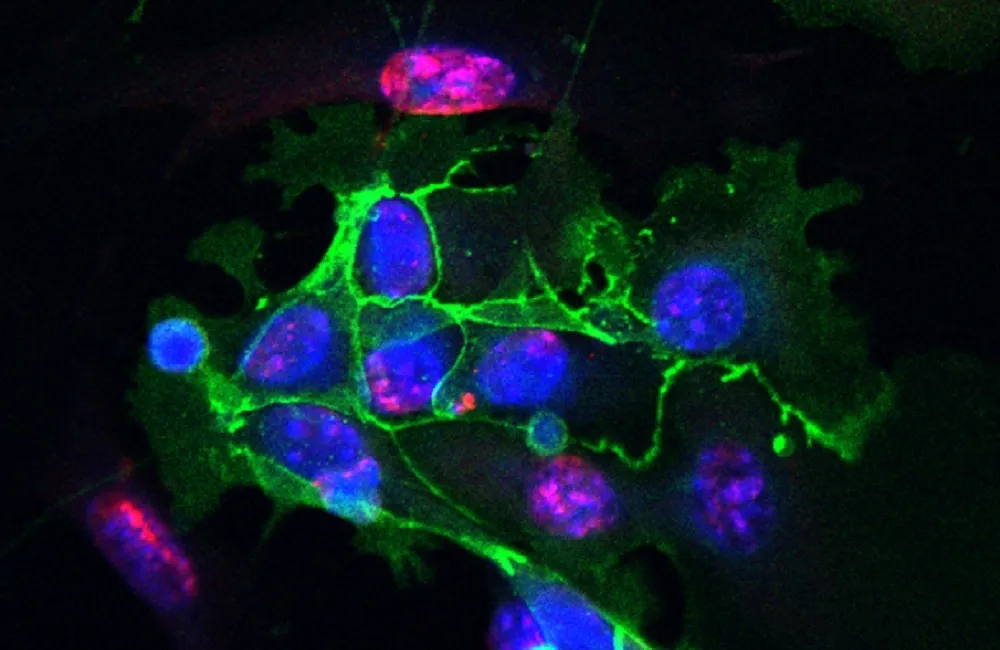
Read More
Today, we have a new study in which researchers focus on pulmonary fibrosis and the role of cellular senescence.
What is pulmonary fibrosis?
Pulmonary fibrosis causes scarring of lung tissue, which results in the progressive loss of lung function over time. When the disease’s origin is unknown, we talk about idiopathic pulmonary fibrosis, or IPF. Currently, the treatment options for this disease are very limited, so the researchers are attempting to understand how the disease begins in order to target the cause.
During the study, the research team has found another piece of the puzzle and is one step closer to solving how IPF begins. The team showed in the experimental model, and in the lungs of IPF patients, that a number of alveolar cells in the epithelial tissue had the biomarkers of cellular senescence. The researchers already suspected that this was the case, as the risk for IPF rises with age.
How cellular senescence drives the development of pulmonary fibrosis
As you grow older, an increasing number of your cells enter into a state known as senescence. Senescent cells no longer divide or support the tissue they are part of; instead, they spew out a cocktail of harmful chemical signals that cause inflammation and drive the aging process.
This pro-inflammatory collection of proteins, cytokines, and signals, is known as the senescence associated secretory phenotype (SASP). The SASP blocks various important cellular processes, prevents stem cells from repairing damaged tissue efficiently, and is implicated in the development of age-related diseases[2-3].
If that was not bad enough, SASP from senescent cells can also encourage other nearby healthy cells to become senescent, initiating a downward spiral of increasingly poor tissue repair. This means that a small number of these cells can have a dramatic effect.
In the case of IPF, senescent cells prevent the lung cells from dividing when they need replacing, and the inflammatory SASP also promotes the further spread of fibrosis.
Pulmonary fibrosis halted in culture
The researchers realized that, as this mechanism also plays a role in cancer, they could potentially use drugs that are known to remove senescent cells, known as senolytics, to treat fibrosis.
The team members have so far tested their approach in a 3D cell culture where they observed the effect of senolytic drugs on fibrotic cells. They observed a reduction in inflammatory factors secreted by the cells and a fall in the mass of connective tissue proteins which rise dramatically during disease progression.
This study demonstrates that senescent cells play a key role in the progression of IPF and that treatment with senolytic drugs can help to halt disease progression by targeting it at the root cause – cellular senescence.
Conclusion
Senescent cells appear to be key players in the development and progression of IPF; therefore, the removal of senescent cells is a promising approach to halting this disease.
Removing senescent cells represents the low-hanging fruit, and given that the number of senolytics is steadily increasing and these drugs are becoming more refined, we can expect to see more progress in this area in the years ahead.
With Unity moving into human clinical trials of senolytics later this year and the huge amount of interest and research about this topic, it is not unreasonable to believe that we will likely see senolytic human trials to reverse fibrosis in the next few years.
Literature
[1]Lehmann, M., Korfei, M., Mutze, K., Klee, S., Skronska-Wasek, W., Alsafadi, H. N., … & Wagner, D. E. (2017). Senolytic drugs target alveolar epithelial cell function and attenuate experimental lung fibrosis ex vivo. European Respiratory Journal, 50(2), 1602367.
[2]Coppé, J.-P., Desprez, P.-Y., Krtolica, A., & Campisi, J. (2010). The Senescence-Associated Secretory Phenotype: The Dark Side of Tumor Suppression. Annual Review of Pathology, 5, 99–118.
[3]Freund, A., Orjalo, A. V., Desprez, P.-Y., & Campisi, J. (2010). Inflammatory Networks during Cellular Senescence: Causes and Consequences. Trends in Molecular Medicine, 16(5), 238–246.





